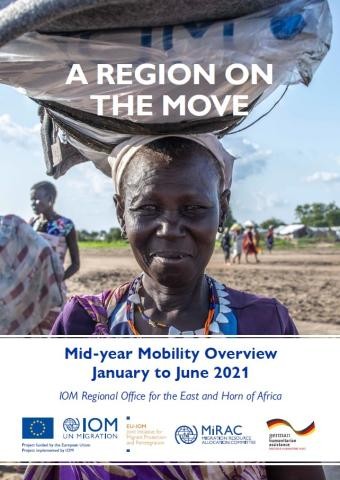A Region on the Move: Mid-year Mobility Overview. January - June 2021

The political and humanitarian landscape of the EHoA region has been highly fluid since 2018. Despite the complex mix of protracted crises and new emerging internal displacement, especially due to conflict in Ethiopia which drove the regional number of displaced persons to nearly 8 million at the end of 2018,3 the region witnessed several major positive advancements during that year.
With the pandemic, mobility and migration slowed down significantly but did not come to an end. Several groups of migrants became stranded due to travel restrictions and border closures while other migrants sought alternative routes and plans, including the decision to return home and put a stop to the migration process. These COVID-19-related hurdles often pushed migrants to undertake journeys that are more dangerous, particularly along the Eastern Route which runs from the EHoA to the Arabian Peninsula. In 2021, notably from February to May and for the first time along this maritime route, more migrants were returning from Yemen than arriving in Yemen from the Horn. Such trend reversal gives a sense of how irregular migrants in Yemen are contending with miserable conditions that often turn into a hopeless situation. Movements picked up again from June, however, they remained limited in the summer months due to extreme weather conditions at sea which make it difficult for migrants to travel by boat.
IOM’s Regional Data Hub (RDH) for the EHoA,11 which aims to promote evidence-based migration dialogue, lead regional research efforts and foster a multi-layered analysis of regional migration data, has been active since 2018. The RDH consolidates and monitors both primary and secondary data sources to provide timely and relevant information on key migration trends in the region. The Displacement Tracking Matrix (DTM)12 is the main methodology used to track and monitor displacement and population mobility, while other IOM data sources are utilized to target specific sub-groups of populations on the move. In 2020, the RDH revised some of its data collection tools to include COVID-19 indicators to monitor aspects such as the awareness of the pandemic and its impact on remittances. Furthermore, multiple research activities have been launched by the RDH since 2019 to strengthen the evidence base on migration and provide a rich overview and deeper understanding of the regional dynamics, notably along the Eastern and Southern migratory routes.

